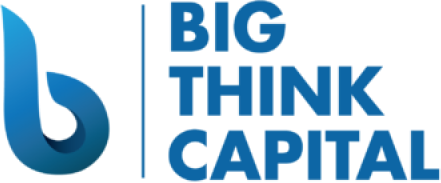Demystifying the SBA Loan Application Process for Small Businesses Amidst Increasing Interest Rates
Estimated Reading Time: 5 minutes
- Understand the benefits and types of SBA loans available.
- Navigating the loan application process step-by-step.
- Tips on managing rising interest rates when applying for loans.
- Importance of maintaining a strong credit score.
- How Big Think Capital can assist you in securing financing.
Table of Contents:
- Understanding SBA Loans
- Advantages of SBA Loans
- The Current Interest Rate Landscape
- The SBA Loan Application Process Explained
- Practical Tips for Securing an SBA Loan in 2025
- Conclusion
- FAQ
Understanding SBA Loans
SBA loans are partially guaranteed by the federal government, making them less risky for lenders. This guarantee allows banks to offer loans with lower down payments and longer repayment terms. The most common types of SBA loans include:
- SBA 7(a) loans: Ideal for general business purposes, including working capital, equipment purchases, and real estate.
- SBA 504 loans: Specifically designed for purchasing fixed assets like real estate and large equipment.
- SBA Microloans: These smaller loans are aimed at startups and growing businesses to cover expenses up to $50,000.
Advantages of SBA Loans
SBA loans offer numerous benefits:
- Lower Interest Rates: Compared to conventional loans, SBA loans typically have lower interest rates, which is crucial as rates are projected to rise further during 2025.
- Longer Repayment Terms: SBA loans can extend repayment periods up to 25 years, easing monthly cash flow pressures.
- Flexibility in Use of Funds: Funds can be utilized for various purposes, offering business owners the flexibility they need.
The Current Interest Rate Landscape
As of early 2025, interest rates are on the rise due to ongoing economic adjustments. According to Federal Reserve projections, rates have been increasing steadily, leading to higher borrowing costs. Business owners should remain vigilant about these changes and their implications for financing options.
Understanding how rising interest rates affect financing is critical:
- Loan Costs Increase: As interest rates rise, the overall cost of loans increases, making it more crucial to secure a favorable rate.
- Impact on Cash Flow: Higher repayment amounts may strain monthly budgets, particularly for new businesses without established cash flow.
- Strategic Planning Is Essential: Business owners should evaluate their financing needs and consider securing funding before rates rise further.
The SBA Loan Application Process Explained
Navigating the SBA loan application process can seem overwhelming, but breaking it down into manageable steps can simplify the journey. Here are the essential stages to follow:
Step 1: Evaluate Your Eligibility
Before applying for an SBA loan, assess your business’s eligibility. Generally, the following criteria must be met:
- Your business must operate for profit and fall within the SBA’s size standards.
- You should demonstrate a need for the loan and have a solid business plan.
- Your creditworthiness is crucial; most lenders look for a credit score of 640 or higher.
Step 2: Prepare Necessary Documentation
Gathering the required documentation is the next crucial step. Lenders will typically request the following:
- Business Plan: A comprehensive plan outlining your business model, goals, market analysis, and financial projections.
- Financial Statements: This includes profit and loss statements, balance sheets, and cash flow statements for the past three years.
- Personal Financial Information: Business owners may need to disclose personal credit reports and financial statements.
- Tax Returns: Provide business and personal tax returns for the previous three years.
Step 3: Choose the Right Lender
Not all lenders handle SBA loans the same way. Here are some factors to consider when choosing a lender:
- Types of Loans Offered: Ensure the lender provides SBA loans relevant to your business needs.
- Turnaround Time: Research how quickly the lender processes loan applications.
- Interest Rates and Fees: Compare interest rates, fees, and terms among various lenders.
Step 4: Submit Your Application
Once your documentation is complete and you’ve chosen a lender, it’s time to submit your application. Provide thorough and accurate information, as a well-presented application can significantly increase your chances of approval.
Step 5: Loan Review and Approval
After submission, the lender will review your application and perform due diligence, which may involve:
- Background and Credit Check: This ensures your credit history and background align with what you’ve presented.
- Evaluation of Business Viability: Lenders assess if your business model demonstrates sustainability and success potential.
Being transparent and providing verifiable data can help streamline this phase of the application process.
Step 6: Closing the Loan
When your loan is approved, you’ll move to the closing phase:
- Review Loan Agreement: Carefully read through the terms of the loan.
- Finalize the Paperwork: Sign the loan documents and any other requirements from the lender.
Once completed, the funds will be disbursed to your business account.
Practical Tips for Securing an SBA Loan in 2025
To increase your chances of securing an SBA loan despite rising interest rates, consider these actionable insights:
- Lock in Interest Rates Early: If possible, seek to finalize your loan quickly to secure the best rates before they rise even further.
- Maintain a Strong Business Credit Score: Regularly review your business credit reports and ensure payments are on time to maintain a healthy credit score.
- Build Relationships with Lenders: Establishing rapport with potential lenders can create trust and drama-free processes when the time to apply arises.
Conclusion
Navigating the SBA loan application process may appear daunting, especially amid increasing interest rates, but with careful preparation and understanding, small business owners can successfully secure the funding needed to thrive.
At Big Think Capital, we specialize in connecting small businesses with the financing solutions they need. Whether it’s an SBA loan, equipment financing, or a working capital advance, our team of funding experts is here to guide you through each step of the process.
If you’re ready to explore your financing options, visit us at bigthinkcapital.com or reach out to one of our funding experts today. Don’t let rising interest rates stall your business growth — take action now to secure your financial future.
FAQ
1. What are SBA loans used for?
SBA loans can be used for various business purposes, including working capital, purchasing inventory, equipment, or real estate.
2. How do I know if I’m eligible for an SBA loan?
Eligibility typically requires your business to operate for profit, meet size standards, have a solid business plan, and maintain a credit score of 640 or higher.
3. What documentation is needed for the application?
You will typically need a business plan, financial statements, personal financial information, and tax returns for the previous three years.
4. How can I improve my chances of approval?
Maintain a strong credit score, prepare thorough documentation, and build relationships with lenders to improve your chances of approval.
5. What should I do if I am denied?
Review the reasons for denial, address any issues, and consider alternative funding options or apply again after improving your application.






